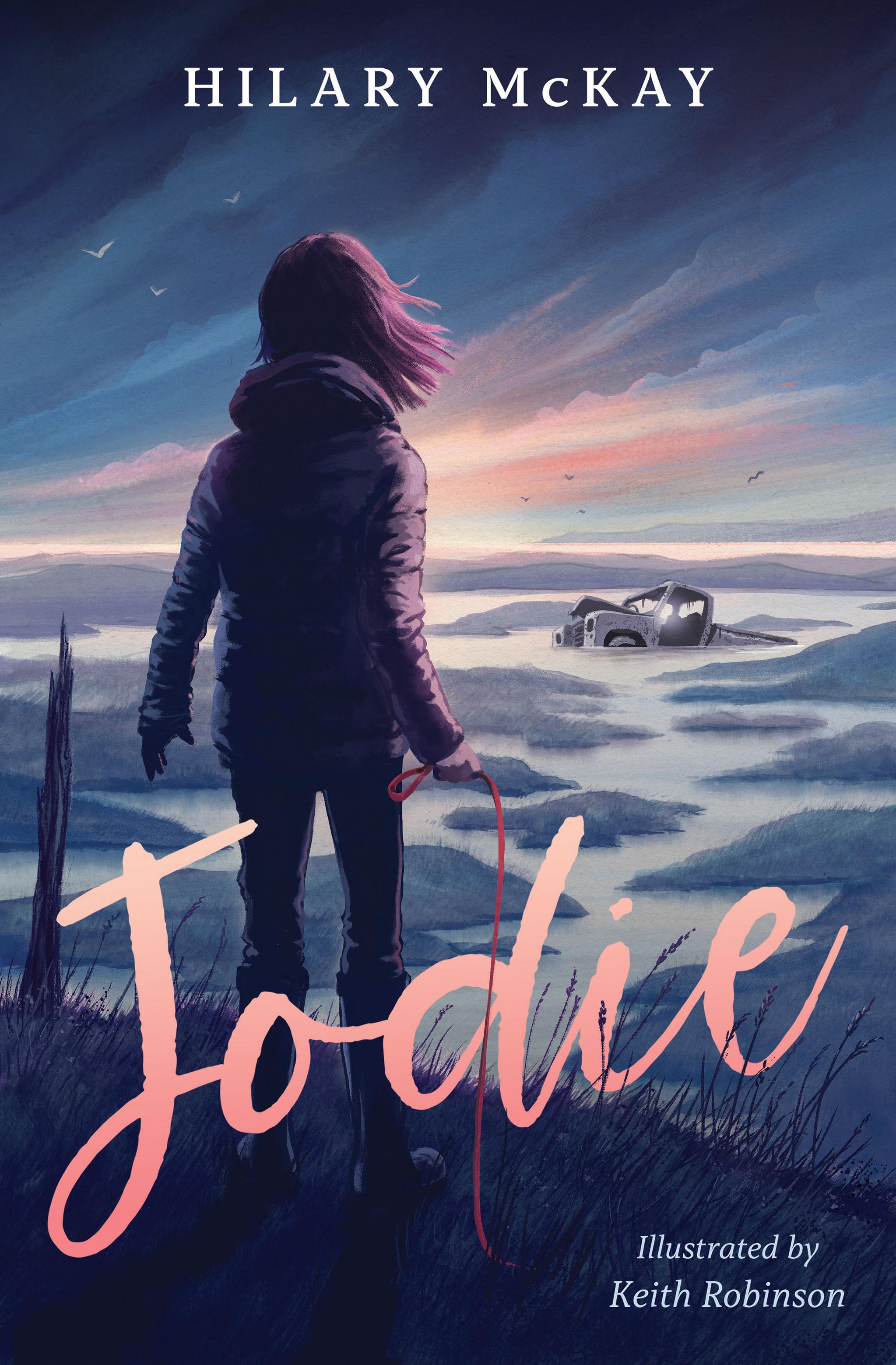


To the Wildlife Trusts and their volunteers.
Thank you for fifty years of friendship and weather and wonderful days.
First published in 2023 in Great Britain by Barrington Stoke Ltd
18 Walker Street, Edinburgh, EH3 7LP
www.barringtonstoke.co.uk
Text © 2023 Hilary McKay
Illustrations © 2023 Keith Robinson
The moral right of Hilary McKay and Keith Robinson to be identified as the author and illustrator of this work has been asserted in accordance with the Copyright, Designs and Patents Act, 1988
All rights reserved. No part of this publication may be reproduced in whole or in any part in any form without the written permission of the publisher
A CIP catalogue record for this book is available from the British Library upon request
ISBN: 978-1-80090-220-6
Printed by Hussar Books, Poland
Chapter 1 Where I Am Now
My name is Jodie.
I’m on a school trip. We’re at a field centre. That’s a place where people study nature and geography and other outdoor things. Part of it is like a hostel and part is for science. Students from university come, and birdwatchers, as well as schools like ours. We are here for two nights. It’s October, end of season, so it’s cheap.
The staff said, “Anything you’re unsure about, tell someone, don’t keep quiet – any problems, any worries.”
Some people are talkers, but I’m a listener. I never tell anyone anything.
They also said, “Nobody is to go anywhere alone.” But right from the start, I went out alone.
And now I’m trapped. I’m trapped in this haunted place. Don’t think I haven’t tried screaming. Because I have.
This is our second day, and I heard the little dog again, barking, barking, frightened, frantic. On and on went the long bursts of barking and then single exhausted yaps: yap – pause – yap.
A longer pause each time.
Nobody did anything to help the dog. No one even seemed to hear.
But I couldn’t bear it.
This is a salt marsh. Imagine mud – cold sea mud. Watery mud, reflecting the sky. Ancient mud. Mud split into jigsaw-puzzle pieces by creeks filled with water.
In places, patches of small plants grow in the mud. They have stiff grey- green leaves, and stems like wire. These plants are drowned twice every day because the whole marsh is under deep salt water when the tide comes in. They cling to the mud. It’s lucky that they do. The plants make launch pads and landing pads for jumping over creeks.
There are narrow creeks that you step over like dark cracks in a pavement. The bigger ones are almost too big to leap across. Some creeks are open, with water running through them. Others are just gaps into darkness that seem to shift and open wider as you jump.
The biggest creek, the one the river makes, can only be reached by crossing the smaller ones. This creek is wider than a bus – it might be wider than two buses. Its sides go down in curves like a water slide. A smooth slope, then a level bit, then sloping down again.
An old pick-up van is wedged in the big creek, just above the level bit.
That’s where I am now. In the metal shell of what’s left of the van’s cab.
The van lies tilted, sunk so deep that if the wheels are still in place, you couldn’t tell. The windows and doors are gone. The seats are half buried. There’s nothing much left of them except their metal frames. The steering wheel looks almost normal. But it won’t turn.
The edges of the doors are crusted with barnacles. I’ve seen a crab. It was greenish and small. The crab scuttled across from the door
opening and disappeared into the shadows. It made me jump.
I wonder how many more crabs there are hiding, waiting for the tide.
If I look back along the creek, I can just see the flat roof of the field centre. On my left is the high bank that I scrambled down to get here. To my right is the estuary and then miles and miles of marsh. Small birds with long legs are running about like clockwork toys, searching the mud for food. The sea looks like a shred of torn silver paper out on the horizon.
I wish the sea would stay on the horizon, but it won’t.
So how did I end up out here, trapped as the water starts to rise?
